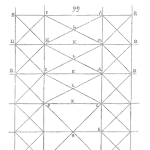
Guest Post by John Ayers (first posted on CERM ® RISK INSIGHTS – reposted here with permission)
The 2020 democratic presidential candidates are backing the New Green Deal, which calls for the elimination of fossil fuels within 10-40 years (depending on which candidate you are talking to). If America is serious about this goal, then nuclear fusion power is the only practical way to begin to achieve it. [Read more…]












 Ask a question or send along a comment.
Please login to view and use the contact form.
Ask a question or send along a comment.
Please login to view and use the contact form.